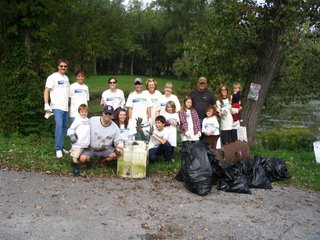Great Lakes Conference
This past weekend, Robin and I attended the Great Lakes Restoration Conference in Cleveland Ohio. After hearing the Politicians’ speeches and the lectures on the importance of the Great Lakes as habitat and fresh water supply, I felt that a lot of precious time was spent preaching to the choir. The conference succeeded, however, in leaving me with a sense of urgency because my overall impression was that our Great Lakes are in a precarious state.
I believe that as Western New Yorkers, our connection to Lake Erie is immutable. My Grandparents rode on the Canadiana, went to Crystal Beach as children, danced at the Crystal Beach dance hall. They then took their children to the beach to share in the happy memories. My parents went on dates to Crystal Beach Park. Later, when my sister and I were little, we spent summer days on the beach. This was a family tradition full of memories of happy childhood, hot sand and cold water, the breeze off the lake, the smell of sugar waffles and French fries, the taste of loganberry.
When I was around the age of nine, not only did the park close but the beach closed too because people were contracting diseases from the water. The point is that I would love to be able to pass on the tradition of enjoying Lake Erie. However, the failure to ensure clean water to drink and swim in renders us helpless to protect our children, the most vulnerable members of society, from unknown dangers lurking in the water.
Now more than ever it is important for those in Washington to hear how we feel about our lake. They need to know that we do not want a permanent Keep Out sign on nature’s playground. We do not want the water sold off to Las Vegas or Asia. We need to encourage our Government to invest in this priceless resource. The Great Lakes needs your help.
To get involved visit: www.healthylakes.org
